Environmental & Occupational Lung Health
Exploring the intricate links between the environment and respiratory function, environmental & occupational lung health addresses the impact of air pollution, chemical exposures, and workplace hazards on pulmonary disease incidence. Chronic exposure to particulate matter, volatile organic compounds, and occupational allergens is strongly associated with diseases like COPD, hypersensitivity pneumonitis, and pneumoconiosis. Increasing attention is being given to identifying and mitigating newer risk factors such as nanomaterial inhalation, indoor biomass smoke, and emissions from industrial solvents. Technological advancements are enabling more precise exposure assessment and real-time monitoring, helping clinicians and researchers better understand dose-response relationships. There is also a growing emphasis on multidisciplinary approaches that integrate occupational medicine, environmental science, and public health to shape effective interventions. Efforts to reduce disparities in exposure and improve workplace standards are gaining momentum as part of a broader push toward sustainable respiratory health practices.

Saurabh Chattopadhyay
University of Kentucky College of Medicine, United States
Ranjan Ramasamy
ID-FISH Technology, United States
Sergey Suchkov
N.D. Zelinskii Institute for Organic Chemistry of the Russian Academy of Sciences & InMedStar, Russian Federation
Yong Xiao Wang
Albany Medical College, United States
Ranjan Ramasamy
ID-FISH Technology, United States
Sergey Suchkov
N.D. Zelinskii Institute for Organic Chemistry of the Russian Academy of Sciences & InMedStar, Russian Federation



Title : Novel signaling mechanisms and innovative therapeutic strategies of pulmonary hypertension
Yong Xiao Wang, Albany Medical College, United States
Title : Changing population immunity to COVID-19 in the context of infection, vaccination and emerging SARS-CoV-2 variants
Ranjan Ramasamy, ID-FISH Technology, United States
Title : Susceptibility to SARS-CoV-2 infection and nasal air conditioning ability
Ranjan Ramasamy, ID-FISH Technology, United States
Title : Comparative evaluation of DECAF and BAP 65 scores in predicting outcomes of COPD exacerbations among in patients at Vicente Sotto Memorial Medical Center
Allanys Joy Q Pino, Vicente Sotto Memorial Medical Center, Philippines
Title :
Saurabh Chattopadhyay, University of Kentucky College of Medicine, United States
Title : Personalized and precision Medicine (PPM) as a unique healthcare model through biodesign driven and inspired biotech, translational applications and pulmonology related marketing to secure the human healthcare, wellness and biosafety
Sergey Suchkov, N.D. Zelinskii Institute for Organic Chemistry of the Russian Academy of Sciences & InMedStar, Russian Federation